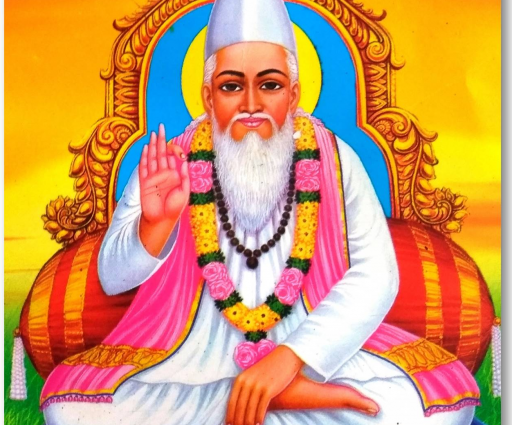KABIR “The Ever Great Saint”, Kabir was a famous Indian poet-saint revered by Hindus, Muslims, and Sikhs alike. He was born in a family engaged in weaving work called ‘Julas’ in Varanasi. He was a student of Ramanand, and spent most of his time at Varanasi.
Facts About Kabir Das:
1. Kabir was a mystic poet and saint of India, whose writings have greatly influenced the Bhakti movement. The name Kabir comes from Arabic al-Kabir which means “The Great”.
2. Kabir was born 1440, in Varanasi, to weavers family. His names means great in Arabic.
3. He become the first disciple of the Bhakti poet-saint Swami Ramananda in Varanasi. He is known for devotional Vaishnavism and Advaita. Advaita philosophy teaching that God was inside every person and everything.
4. His greatest work is the Bijak (the “Seedling”), an idea of the fundamental one. This collection of poems elucidates Kabir’s universal view of spirituality.
5. Though his vocabulary is replete with Hindu spiritual concepts, such as Brahman, karma and reincarnation, he vehemently opposed dogmas, both in Hinduism and in Islam. He often advocated to simply follow Sahaja path, or the Simple/Natural Way to oneness in God.
6. Kabir panth (“Path of Kabir”) carried his carried forward legacy. Soon a religious community that recognizes him as its founder and is one of the Sant Mat sects.
7. His Hindi was a vernacular, straightforward kind, much like his philosophies. A major part of Kabir’s work as a bhagat was collected by the fifth Sikh guru, Guru Arjan Dev, and incorporated into the Sikh scripture, Guru Granth Sahib.
8. The hallmark of Kabir’s works consists of his two line couplets, known as the ‘Kabir ke Dohe’.
9. Two of his disciples, Bhāgodās and Dharmadās, did write much of it down, “. There is also much that must have passed, with expected changes and distortions, from mouth to mouth, as part of a well-established oral tradition.”
10. His writings significantly influenced the Bhakti movement. Some of his famous writings include ‘Sakhi Granth’, ‘Anurag Sagar’, ‘Bijak’ and ‘Kabir Granthawali’.
11. Kabir was one such great mystic and social reformer who enriched the human society, by his struggle against various forms of disharmony in the society, i. e. discrimination, slavery, corruption, castism and other abnormalities.
12. Kabir believed that all religions were different paths leading to the same destination. He emphasized that there was only one God, and all religions were different ways of reaching Him.
13. Kabir died in 1518, in place known as Maghar. As per a legend, after his death, there arose a conflict between Hindus who wanted to cremate his body and Muslims who wanted to bury it. In a moment of miracle, flowers appeared beneath his shroud, half of which were cremated at Kashi and half buried at Maghar.
Other Readings https://www.birdsviewinfo.com/swami-vivekananda-guru-of-wisdom-and-bliss/


Comments are closed, but trackbacks and pingbacks are open.